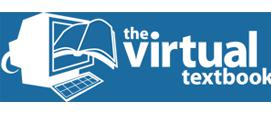Arithmetic Progressions
Students are required to be able to identify, generate and generalise arithmetic sequences. This resource list contains a variety of activities requiring students to recognise an arithmetic progression, and find the nth term.
Visit the secondary mathematics webpage to access all lists.
- ALL
- Teacher guidance
- Textbook
- Activity sheet
Teacher guidance
Year Nine Booster Kit
Lesson 7 contains work on sequences designed to highlight misconceptions such as doubling the value of the 10th term to find the value of the 20th term. The question could be displayed together with an incorrect answer and students asked to show why the answer is incorrect.
Sequences
This resource contains a series of interactive Excel sheets designed to explore number sequences requiring students to find a formula, in addition to a non-linear spreadsheet, the resources contains:
Number Sequences: Linear is designed for the teacher to lead students through a series of geometric patterns in which students explore the number patterns, derive a formula and plot the function on a graph leading to an understanding of why a linear sequence is so called. The final spreadsheets contain worksheets useful for consolidation.
Textbook
Sequences
The text book contains explanations, examples and exercises which requires students to find the next term of a sequence and to generate a sequence using the nth term. Some attention is needed to ensure students are familiar with the notation used in this section.
The next activity generates the nth term by comparing the sequence to a relevant times table. An interesting question to ask students is "what else in maths goes up in 3's?" This helps them relate the 3n to the 3 times table. This section provides useful examples generated from diagrams in which students can be asked to relate the structure of the formula to the sequence produced by the diagram.
Number Patterns and Sequences
The text book contains explanations, examples and exercises which requires students to find missing numbers in sequences and use function machines to generate sequences. These are useful when finding the nth term by asking students what happens when the input to the machine is 'n'.
Further examples require students to find the nth term of an arithmetic sequence and attempt to explain how the nth term is found and used.
The activities sheet provides some interesting activities with Fibonacci sequences and generating sequence from practical situations.
Activity sheet
Sequences
Sequences pack one contains a number of simple arithmetic sequences requiring students to find the next term in the sequence and term to term rules. Sequences are generated in a variety of ways including pictorially and could be extended to ask students to find the nth term.
Sequences pack two contains more challenging examples including arithmetics sequences containing negative numbers and non arithmetic sequences which could be used to show that these formula only work with arithmetic sequences.
Algebra Makes Sense
This resource contains twenty activities on function machines and finding and using formulae for the nth term of an arithmetic progression.
Straws and Triangles: introduces the idea of the nth term using simple notation.
Number Problems: introduces algebraic notation and suggests methods of reversing operations using sequences and solving equations.
Mapping Diagrams: looks at mappings and could be developed to explore what happens when a variable is introduced into each mapping.
Whos Rule is Correct?: looks at different patterns and asks student to describe which rule is correct. This resource could be useful as extension material.





